Ducks are omnivorous birds and are constantly seen foraging around for food. They are always on the lookout for their next nibble. But the question is, do ducks have teeth to eat the different types of nuts, insects, seeds, grains, fruits, and other foods?
To answer plainly No. Ducks don’t have teeth. They don’t need teeth because they swallow their food whole.
However, they do possess serrated grooves in their bills, called lamellae. These bristle-like notches help them clutch food. The lamellae along with the nail are unique tools that help the duck find and eat food.
Learning the various parts of a duck’s bill and how each part assists these birds in eating is important. Duck is such an astonishing bird that it acts both as an omnivore and scavenger.
Keep reading to know more about ducks eating mechanisms as well as a few interesting facts:
Duck Teeth

Like most birds, ducks are toothless creatures. The reason why these birds don’t possess any teeth is that they don’t need them. Ducks are not designed to chew their foods. They usually catch and swallow their prey in a single gulp.
The theory of evolution suggests that if an animal does not make adequate use of any part of its body, that specific part might disappear gradually over time. Only those elements evolve and become part of their genetic make-up, that are used regularly. So theoretically, as ducks stopped using teeth, they never got the tooth gene from their ancestors.
Duck Bills
As ducks don’t have teeth to chew their food like most animals. They do, however, have several distinct modifications and a unique bill structure that help them manage their food and eat more efficiently:
Spatulate
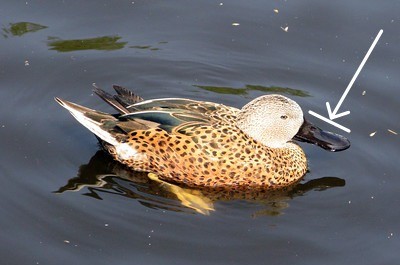
Ducks usually have a flat and elongated shape bill. This shape of spatulate helps the birds break food just like teeth. But it doesn’t have the same strength as teeth for grinding hard foods. Also, ducks don’t chew their food while eating. This spoon-shaped spatulate helps the ducks separate food from water, mud, or sand.
The overall size and shape of a duck’s bill vary among species and the flattening of spatulate is determined by what foods a duck eats.
Ducks with flat bills usually consume more plant material like algae, seeds, grains. Sharper-billed ducks eat more fish. A few other birds also have a spatulate tip to their bills, such as the roseate spoonbill and a spoon-billed sandpiper.
Lamellae
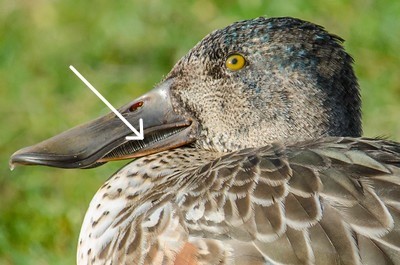
The lamellae are composed of small, fringe or comb-like formations on each side of a duck’s bill. These fringes are just towards the inside towards the tip of the bill. The shape of lamellae is very similar to small serrated teeth.
The composition of lamellae is slightly flexible and elastic. Ducks use them for draining or filtering food from water, mud, or sand.
All ducks have some form of lamellae, but the length, number, and spacing of the fringes are unique for each species. Normally the lamellae are not noticeable unless the duck’s bill is open or there is some sort of injury or deformation on the side of the bill that reveals the lamellae.
Similar to ducks their cousins like geese, swans, and other types of waterfowl, flamingos also have noticeable lamellae.
Nail
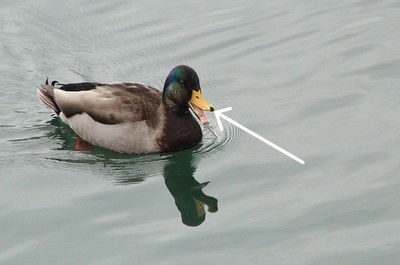
Ducks also have a small bump called the nail on the tip of their bill’s upper side. The shape, size, and color of the nail can vary from species to species. This may be of the same color as the rest of the bill or could differentiate as opposed to the main color of the bill.
The nail is beneficial in digging through mud or debris as it helps ducks uncover aquatic seeds, small roots, worms, and other foods.
Swans and geese also have this nail-type structure on their bills. For several duck species, such as lesser scaups and greater scaups, the nail can be a helpful identification mark as well.
Grin Patch
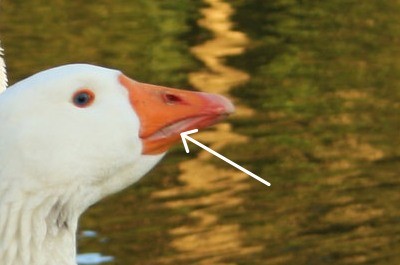
The grin patch is a grin or a smile-like arch on the side of a duck’s bill that shows the lamellae. It assists in a more manageable filtrating and feeding. The patch could be a contrasting colour than the bill, making it more apparent. The grin patch’s overall design is not fully known.
Not all duck species have a grin patch, and it is more common in swans and geese than on most ducks. A grin patch can also be seen on some penguin’s bills as well.
Duck Bristles
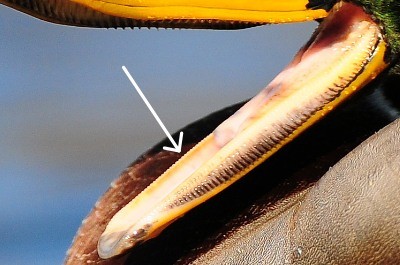
Duck bristles as briefly discussed are thin rows of teeth-like structures present along the sides of the beak. But bristles unlike real teeth lack enamel coating.
Ducks use them to discover, grip, crush and filter their food. There is sufficient space between bristle lines so that ducks can comfortably pull nutrients out of water or mud.
Whales also use the same filtering system to eat marine animals. If you are curious to see these teeth-like structures then wait for the bird to open its mouth. You can observe them from a safe distance when a duck goes quack.
Now that you have learned all about a duck’s bill, let’s see how a duck uses its bill to eat food.
How Do Ducks Eat their Food?
A duck will make use of the soft tip of its beaks to find food. After this, they use the tip of their beaks called the nail to help clutch it. The ducks utilize the lamellae or notches called bristles inside of their bill to grasp bigger pieces of food like fish or other aquatic plants.
Ducks prefer to eat food that’s a little moist or damp. Because think about it, when you are trying to swallow practically the whole food, it should be a little moist to help it go down easily.
For the same reason, you may notice that after feeding your duck, they usually go over and have a drink of water immediately to help them swallow. The type of food a duck usually eats is dependent on the size, shape, and particular characteristics of its bill.
Amazingly, these unique features of a duck’s bill help them find food in murky waters and swamps. Ducks usually don’t rely on sight as much as they do on touch. Which is very different from the way chickens and some other birds search their food. Chickens typically use sight to find food.
It seems odd to me how chickens can see so well with those tiny little eyes. However, they can spot a hawk way up in the sky and alert the rest of its flock. The instincts and special features of ducks and other animals are pretty amazing to me.
Do Ducks Eat Rocks?
Ducks do eat rocks. They consume a large amount of gravel, sand, and small stones. It is not because there is a shortage of other food sources.
They store these rocks and gravel in their gizzards. The rough texture of these rocks helps break down food due to its rough texture.
Ducks are also known for eating precious metals like gold. A very interesting incident took place in 1911, where a few gold prospectors gathered in Nebraska. The story happened when some local hunters discovered tiny nuggets of the precious metal in the gizzards of ducks they had just shot. Nonetheless, these fortune seekers were never able to discover where the gold originally came from.
Do Ducks Eat only Fish?
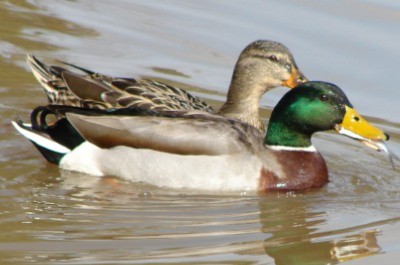
Have you ever asked yourselves, that do ducks only eat fish or do they eat something else as well? To answer this plainly, yes ducks do eat fish. But as we discussed earlier, ducks are omnivorous, and other than fish they consume a variety of different food items like insects, seeds, grains, and sometimes even garbage.
Ducks are multi-talented beings that can fly, survive on the ground and even live in water. In water, ducks dive deep to look for fishes, insects, and worms. It can pull out fish by using its powerful beak.
This is usually followed by instant swallowing of the fish as a whole. For ducks living in the wild, fish packs a lot of energy, proteins, and other essential nutrients. Domesticated ducks also relish eating fish.
Do Ducks Bite People?
So we have established that ducks don’t have teeth, but do they bite people? At best they can nibble at you using their bristles, but does it hurt?
The fact is that adult domesticated ducks would seldom bite you unless provoked. So you need not worry about it too much.
Their playful nibbling doesn’t hurt that much. Some pet ducks might even eat out of your hand and occasionally nip at your finger with their bill. It’s just an uncomfortable feeling, but nothing painful.
Most domesticated ducks don’t have lamellae that are rough enough to hurt. Nevertheless, it may be a little annoying.
What Makes Ducks Such Great Swimmers?
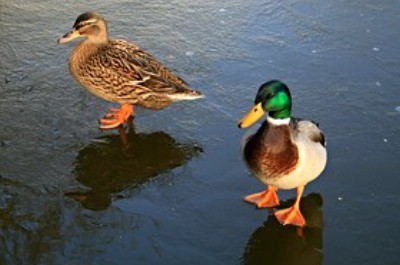
Most duck species are at home on the water as they are great on land and in the air. Ducks have two very unique characteristics that make them such great swimmers and that is waterproof feathers and webbed feet.
The webbed feet of a duck are designed specifically for swimming. They serve as paddles, assisting ducks to swim fast and cover great distances. Also, ducks don’t have any blood vessels or nerves in their feet. This helps them to tolerate even icy cold waters.
The second feature that makes ducks great swimmers is their waterproof feathers. They help the duck keep dry and act as an insulator from cold water.
Like many birds, ducks also have a gland called a preen gland next to their tails. This gland produces a special type of oil. With the use of their bills, ducks can distribute this oil while sprucing to coat their feathers and provide a layer of waterproofing that keeps them smooth and dry in water.
Do Ducks Only ‘Quack’?
It is common fact that female dabbling ducks quack a lot. But that doesn’t mean this is all they have to say. Some ducks have a wide array of noises and calls that they make at specific times.
This ensemble of voices includes whistling, yodling, coos, and even sharp grunts. So don’t underestimate them as these wonderful creatures have a lot to say.
Do Duck Quacks Echo or Not?
There is an urban legend that is very famous among new bird fanciers and enthusiasts. And that is that a ducks quack don’t echo. As fascinating as it might sound, unfortunately, it is not true.
In 2003, this myth was debunked on a very famous TV show called “MythBusters”, where they disproved this fact. Several other types of research have also been done on this topic and the conclusion was a ducks quack echo.
What Other Birds Have Teeth?
No bird species are living right now that have teeth. However, research has shown that many bird species that roamed the earth about 100 million years ago had teeth.
The birds existing right now had reptilian ancestors called ‘Archosaurs’ which had substantial teeth. Over time, the teeth gene did not develop as birds made use of their beaks more for searching and eating food. Evidence of this gene can be still discovered in rare cases of certain chicken breeds. Even now very few chickens species turn up with teeth, but these are very rare incidences.
Archosaur, (subclass Archosauria), any of various reptiles, including all crocodiles and birds and all descendants of their most recent common ancestor. Archosaurs (“ruling reptiles”) are members of a subclass that also includes the dinosaurs, the pterosaurs (flying reptiles), and several groups of extinct forms, mostly from the Triassic Period (251 million to 200 million years ago).
https://www.britannica.com/animal/archosaur
Frequently Asked Question
Does A Duck Have Teeth?
To answer plainly No. Ducks don’t have teeth. They don’t need teeth because they swallow their food whole.
Can Ducks Bite You
The fact is that adult domesticated ducks would seldom bite you unless provoked.
What Do Ducks Eat
A ducks natural diet consists of vegetation, seeds, insects, worms and fish.
Can Ducks Eat Bread
Ducks can eat bread, however too much can make them feel full without all the natural vitamins and nutrients that they need. Bread isn’t harmful, but our advise is to only feed them small amounts.
Conclusion
To finally conclude, ducks don’t have teeth. They do possess some bristle-like notches in their bill, that help them clutch food. The lamellae and the nail are unique tools that help the duck find and swallow food.
As far as do duck bites people, it’s not a serious thing, since they don’t have any teeth. The worst thing that can happen when a duck uses its bill is, you might feel just a pinch. It might be a little awkward, but not painful.
Thank you for showing interest in this post! We hope that you got some valuable facts about a duck, so check back with us! If you have questions leave me a comment!
